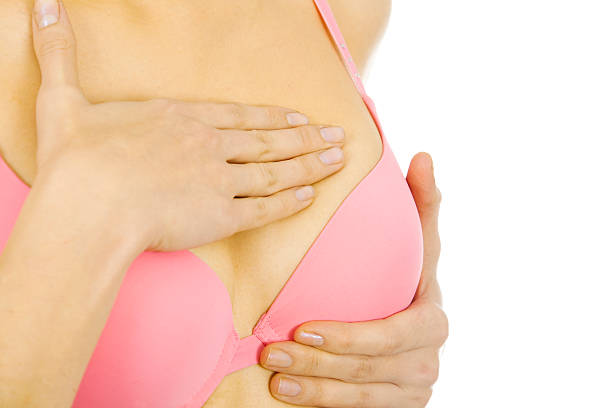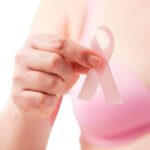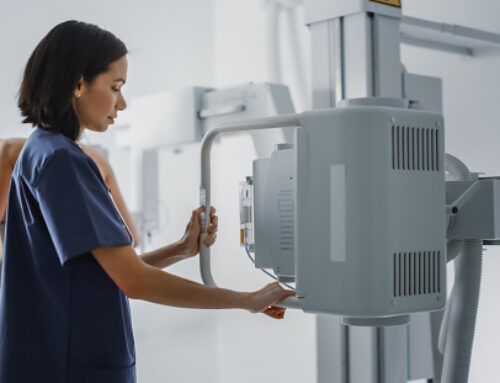The most commonly diagnosed cancer for women , breast cancer will affect nearly 1 in 8 women in their lifetimes. While a very small percentage of men are diagnosed with breast cancer every year, those most at risk are women. Risk also increases with age, so older women are typically more at risk than their younger counterparts. Family medical history also plays a role; women who have a close female relative who was diagnosed with breast cancer before the age of 50 may be at greater risk of developing the disease themselves. Research is still ongoing regarding the possible causes of breast cancer. But while we don’t know the cause, and while you cannot change your family history, gender, or age, there are a few key steps you can take to reduce your risk as much as possible, and give yourself the best chance to prevent this disease.
If you’re concerned about developing breast cancer, you might be wondering if there are steps you can take to help prevent breast cancer. Some risk factors, such as family history, can’t be changed. However, there are lifestyle changes you can make to lower your risk.
1. Move your body regularly.
Ample research suggests that regular exercise can reduce your breast cancer risk, as well as help prevent the onset of other conditions. Even moderate exercise a few times per week has been shown to have tremendous benefits. As a bonus, an exercise habit can help you lose weight: another factor shown to contribute to a reduced breast cancer risk.
2. Limit your alcohol consumption.
Numerous studies have linked alcohol consumption to an increased breast cancer risk. Excessive alcohol intake can negatively impact other areas of your health, so it is always wise to consume in moderation. Experts suggest no more than two standard glasses per day is appropriate.
3. Maintain a healthy weight.
Being overweight or obese is connected to a higher breast cancer risk, as well as an increased chance of heart disease, diabetes, and other ailments. Eating right and exercising regularly can help you lose weight and achieve a healthy size for your body type. Maintaining a healthy weight is especially important for postmenopausal women.
4. Breastfeed your children.
There are a number of studies that associate breastfeeding with a lowered breast cancer risk. It is most advantageous to breastfeed for longer periods, preferably one year or more, and beneficial to breastfeed multiple children. Other studies have found a link between having children and a reduced breast cancer risk. However, some research argues that having your first child after the age of 30 slightly increases your risk.
5. Get checked.
Alongside the above lifestyle choices, it is vital to have your breasts checked regularly. You should habitually perform a monthly self-exam, and regular assessment by your doctor. Women over the age of 40 should schedule annual mammograms, or if you have a mother, sister, or daughter who has been diagnosed, you may opt to begin mammograms sooner.
At VPM Imaging, your care is our priority. If you’d like further information on self breast exams and screening options such as ultrasound, mammography, or MRI, please contact us today. Please do not hesitate to contact our radiology team. We are happy to speak with you and address any concerns you may have regarding your breast health.
What can I do to reduce my risk of breast cancer?
Research shows that lifestyle changes can decrease the risk of breast cancer, even in women at high risk. To lower your risk:
- Limit alcohol. The more alcohol you drink, the greater your risk of developing breast cancer. The general recommendation — based on research on the effect of alcohol on breast cancer risk — is to limit yourself to no more than one drink a day, as even small amounts increase risk.
- Maintain a healthy weight. If your weight is healthy, work to maintain that weight. If you need to lose weight, ask your doctor about healthy strategies to accomplish this. Reduce the number of calories you eat each day and slowly increase the amount of exercise.
- Be physically active. Physical activity can help you maintain a healthy weight, which helps prevent breast cancer. Most healthy adults should aim for at least 150 minutes a week of moderate aerobic activity or 75 minutes of vigorous aerobic activity weekly, plus strength training at least twice a week.
- Breast-feed. Breast-feeding might play a role in breast cancer prevention. The longer you breast-feed, the greater the protective effect.
- Limit postmenopausal hormone therapy. Combination hormone therapy may increase the risk of breast cancer. Talk with your doctor about the risks and benefits of hormone therapy. You might be able to manage your symptoms with nonhormonal therapies and medications. If you decide that the benefits of short-term hormone therapy outweigh the risks, use the lowest dose that works for you and continue to have your doctor monitor the length of time you’re taking hormones.
Can a healthy diet prevent breast cancer?
Eating a healthy diet might decrease your risk of some types of cancer, as well as diabetes, heart disease and stroke. For example, women who eat a Mediterranean diet supplemented with extra-virgin olive oil and mixed nuts might have a reduced risk of breast cancer. The Mediterranean diet focuses on mostly on plant-based foods, such as fruits and vegetables, whole grains, legumes, and nuts. People who follow the Mediterranean diet choose healthy fats, such as olive oil, over butter and eat fish instead of red meat.
Maintaining a healthy weight also is a key factor in breast cancer prevention.
Is there a link between birth control pills and breast cancer?
There’s some evidence that hormonal contraception, which includes birth control pills and IUDs that release hormones, increases the risk of breast cancer. But the risk is considered very small, and it decreases after you stop using hormonal contraceptives.
A recent study that showed an association between hormonal contraceptive use and breast cancer determined one additional breast cancer could be expected for every 7,690 women who use hormonal contraception for at least one year.
Discuss your contraceptive options with your doctor. Also consider the benefits of hormonal contraception, such as controlling menstrual bleeding, preventing an unwanted pregnancy, and reducing the risk of other cancers, including endometrial cancer and ovarian cancer.
What else can I do?
Be vigilant about breast cancer detection. If you notice any changes in your breasts, such as a new lump or skin changes, consult your doctor. Also, ask your doctor when to begin mammograms and other screenings based on your personal history.
Find Out Your Family History
Women with a strong family history of cancer can take special steps to protect themselves. That’s why it’s key for women to know their family history. You’re at higher risk if you have a mother or sister who had breast or ovarian cancer. This risk is even higher if your relative was diagnosed at an early age. Having multiple family members (including males) who had breast, ovarian or prostate cancer also raises your risk. A doctor or genetic counselor can help explain your family history of the disease.
Don’t Forget Mammograms
Breast cancer screening with mammograms saves lives. It doesn’t help prevent cancer, but it can help find cancer early when it’s more treatable.
Most women should get yearly mammograms starting at age 40.
Women at higher risk for breast cancer may need to start getting screened earlier. It’s best to talk to a doctor by age 30 about your risk and whether you’d benefit from earlier screening.
Because regular breast self-exams haven’t proven to be beneficial, they aren’t recommended for screening. Still, knowing your breasts is key. Tell your doctor right away if you notice any changes in how your breasts look or feel.





